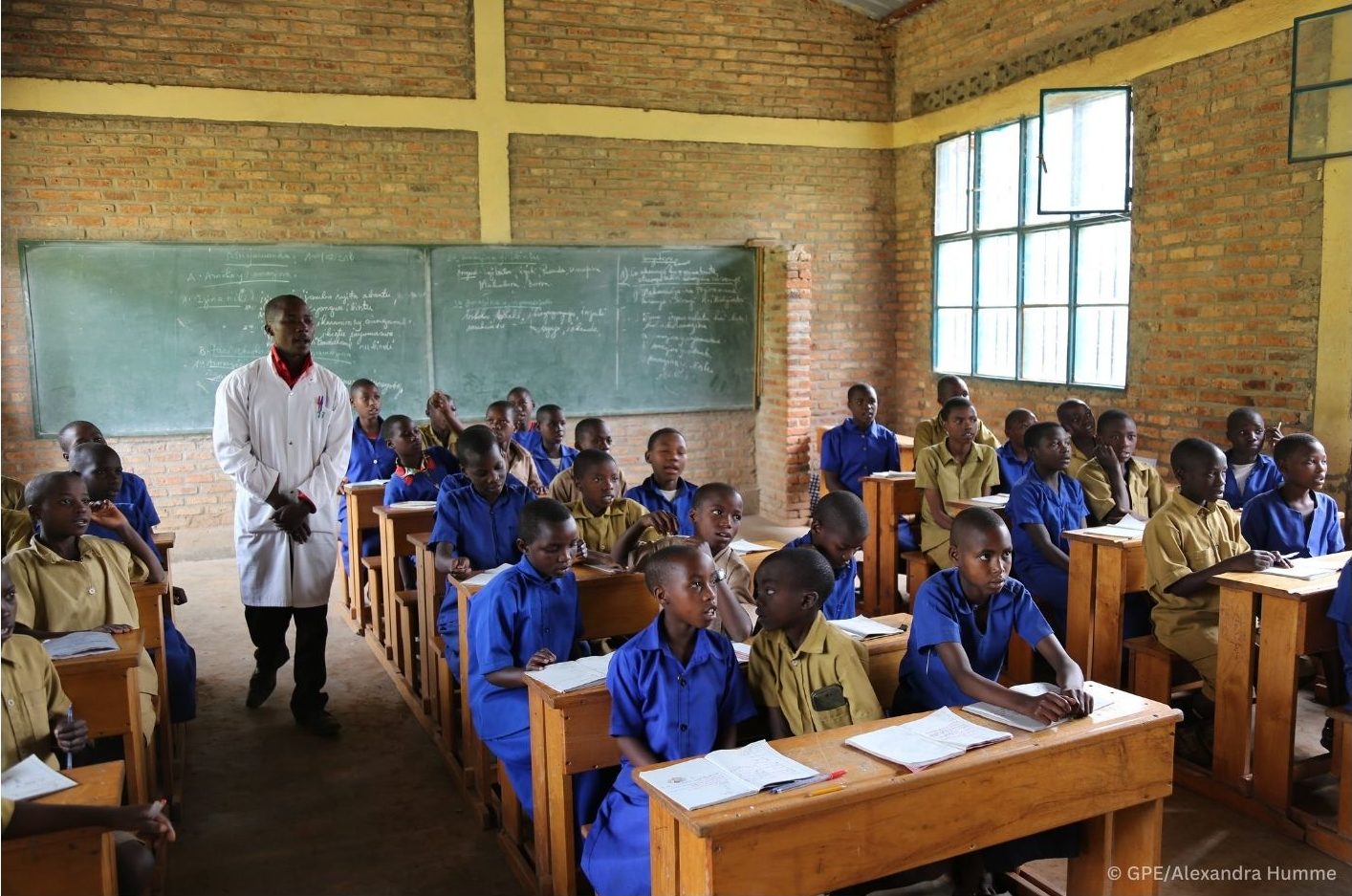How Post-conflict Narratives in History Textbooks Impact Peacebuilding Efforts: The Case of Rwanda
In this blog post, Jessica Viggers presents key takeaways from her NORRAG Prize in Comparative and International Education winning Master’s Thesis titled “War of the Words: How Post-Conflict Narratives in History Textbooks Impact Peacebuilding Efforts.” The NORRAG Prize in Comparative and International Education is an annual award presented by the NORRAG Global Education Centre and the UNESCO Chair in Comparative Education Policy. This prize aims to recognize an exceptional Master’s thesis at the Geneva Graduate Institute that addresses critical issues in the field of comparative and international education.
The idea that there is a relationship between education and conflict has long been discussed in academic literature. It is seen in the impact of inequitable access to education (Brown, 2011; Bush & Saltarelli, 2000) as well as in inflammatory content taught within school walls (Gallagher, 2004). However, just as education can be a destructive tool, so too can rewriting the conflicting-supporting narratives within a society to ones that promote peace and reconciliation (Bar-Tal et al., 2014; Sanz, 2012; Taka, 2020).
Historically, countries have taken a variety of approaches to addressing recent conflicts taking place within their borders. In some cases, decision-makers have deliberately avoided discussing the recent past, lest they reopen old wounds prematurely without investing the necessary time and expertise in crafting a common educational approach agreeable to different parties in a conflict (Buckley-Zistel, 2009; Parliamentary Assembly, 2000). Some communities may view the discussion as damaging or destructive to the newfound peace (Dy, 2013; Dy, 2015) or may shy away from material that places guilt upon their community (Davies, 2000; Muižnieks, 2017). Nevertheless, in cases where recent conflicts are introduced into the curriculum, divisions within society may act as barriers to effective peacebuilding education. Communities may instead opt for narratives that emphasise the victimhood of the group they belong to, while rejecting allegations of wrongdoing and ignoring the existence of victims outside their group (Swimelar, 2013; Davies, 2000; Terra, 2000).
Moreover, narratives can be manipulated by those in power to help strengthen the position of the group in power, particularly if a single group emerges from the conflict victorious over their opposition as they have greater control in ensuring history is written in their favour (Henry, 2016). Despite the grim picture painted thus far, education about a conflict can be an effective tool in reconciliation. Moves to expand discussion across disciplines have been argued as a successful tool for not only understanding the past, but preventing future violence as well (Krieg, 2015; Gasanabo et al., 2016).
Importantly, education is not limited to the classroom. Children will learn through the media, families, and the community in which they live (Torsti, 2007; Meseth & Proske, 2015). When contradictions exist between what students learn in school and at home, they are more likely to believe the latter (McLean Hilker, 2011). This has the potential to be problematic, as these personal accounts may introduce a level of bias that creates discrepancies in understanding across communities (Buckley-Zistel, 2009; Munyas 2008).
Previous research has come up with several suggestions for improving post-conflict education, such as relying on traditional values within society (Rwantabagu, 2010), acknowledging the impact national politics have on the shape educational materials take (Dy, 2015), and, rather than forcing a single, unified narrative, making space for multiperspectivity when discussing recent conflicts (Munyas, 2008; McLean Hilker, 2011; Keaveney, 2009). With these considerations in mind, a case study focusing on the treatment of the 1994 Genocide Against the Tutsi in Rwandan history textbooks was conducted to gain a better understanding of how educational decision makers frame narratives about a conflict a full generation after its cessation. The textbooks included in the study, all published by the Rwanda Basic Education Board in 2020, represent the official narrative being taught to secondary school students receiving their education in public schools.
The term “genocide” appears roughly 1100 times over the six textbooks making up the Rwandan secondary school history curriculum. The term appears most frequently in units dedicated to discussing the events surrounding the 1994 conflict, though students can find reference to the genocide scattered throughout each of the six books. Within these particular units, students start in Senior One learning about the concept of genocide more broadly, whereas in Senior Two, students learn about the factors leading up to it and the course the violence took. Senior Three teaches the history of post-independence Rwanda, showcasing how the events of recent history foreshadowed the genocide to come, the consequences of the genocide, and the challenges faced by the post-conflict government. In Senior Four, students compare three cases of genocide in the 20th century, emphasizing the gravity of the one experienced by Rwandans. Senior Five expands upon the previously covered First and Second Republic before devoting an entire unit to the concept of “genocide denial”. Finally, Senior Six focuses on the causes and course of what the textbooks refer to as the 1990-1994 “Liberation War” before presenting students with a unit dedicated to genocide prevention.
When analysing the material spread across all six textbooks, several themes arise. The first is the de-emphasis on ethnic labels in Rwandan society. The textbooks portray the labels “Hutu,” “Tutsi,” and “Twa” as tribal distinctions that were later turned into strict ethnic divisions by colonial powers as part of a “divide and rule” strategy that continued to be used by the post-Independence governments at the expense of the Tutsi. In this way, the textbooks are able to differentiate the current regime which emphasises the unity of all Rwandans from the previous regimes characterised by injustice and poor governance. While the continuation of essentialist ethnic identities can hinder post-conflict reconciliation (Torsti, 2007), and an approach de-emphasizing societal divisions has been argued as positive step for peacebuilding (Buckley-Zistel, 2009; Gallagher, 2004; Bush & Saltarelli, 2000), the top-down erasure of ethnic identity may not align with how the people wish to identify (Davies, 2004) and may even go as far as masking a return to minority rule within Rwanda (Buckley-Zistel, 2009).
In teaching the origins of the conflict, the textbooks showcase a progression of discriminatory policies against the Tutsi beginning in 1959, resulting in a refugee crisis that would result in hundreds of thousands fleeing to neighbouring countries without the option for repatriation. It is from this group of refugees that a hero arises in the Rwandan Patriotic Front (RPF), who are portrayed as single handedly ending the genocide and saving all Rwandans from the cycles of bad governance and oppression they had been trapped in. Likewise, the narrative cast the extremist Hutu as the primary villains in the story, a distinction worth noting as previous scholars such as Henry (2016) have criticised the way government narratives have cast blanket guilt upon all Hutu, in turn excluding moderate Hutu victims from the narrative. While this is largely remedied in the revised textbooks, the way the textbooks cleanly cast groups into the roles of hero, villain, and victims with simple motivations prescribed to members of each group fails to encompass the lived experience of average Rwandans in their own history (Edlmann, 2017), representing a lost opportunity for further reconciliation.
Genocide denial is treated very seriously in Rwanda, where teaching in a way that “incites ethnic hatred” is treated as a criminal offense (Buckley-Zistel, 2009; Mclean Hilker, 2011). Primarily addressed in the Senior Five and Senior Six textbooks, genocide denial is described as the final stage of genocide and is not limited to perpetrators of physical violence. Students are taught to be wary of genocide denial and ideology at every level, even in their own homes. Without denying that genocide denial can be dangerous, the textbook paints with a broad brush, extending to anything falling outside the dominant narrative. This single narrative approach can be damaging because, as post-conflict literature has repeatedly shown, children are constantly exposed to narratives outside the classroom that may not fit in with the dominant narrative (Boßmann, 1977; Gasanabo et al., 2016; Meseth & Proske, 2015; Munyas, 2008; Torsti, 2007). Previous studies have found that while the Rwandan people may publicly echo the official conflict narrative, the same may not hold privately, creating incongruent narratives being held through society (Buckley-Zistel, 2009; McLean Hilker, 2011). The single narrative approach does not give students the skills to engage critically with the conflicting narratives they encounter, leaving space for peace to deteriorate over time (Edlmann, 2017).
Overall, analysis of the current Rwandan history curriculum shows the presence of both peacebuilding and peace-threatening elements. The Rwandan case study is just one example, but it highlights how decision-makers may use narratives present in educational materials to pursue multiple goals, like garnering support for the ruling regime, that could decrease the efficacy of peacebuilding efforts. As such, anyone in a position to help advise the decision-making process should take care to make themselves aware of the different needs and motivations in place, as to be in a better position to help accomplish these goals without damaging peacebuilding work.
About the Author:
Jessica Viggers recently completed her studies at the Geneva Graduate Institute in Geneva, Switzerland as part of the Master in International and Development Studies programme under the Conflict, Peace, and Security specialisation. She completed her undergraduate degree at the University of St. Thomas in St. Paul, USA where she was a member of the Pi Sigma Alpha National Political Science Honor Society and the Beta Gamma Sigma International Business Honor Society. Her previous research has ranged from the stability of political alliances in non-democratic regimes to the application of international humanitarian law in civilian internment camps to the impact of post-conflict education on peacebuilding.
About the Thesis:
The Master’s thesis “War of the Words: How post-conflict narratives in history textbooks impact peacebuilding efforts” seeks to analyze the impact of post-conflict education on communities that have experienced violent conflict. It focuses specifically on the narratives about conflicts propagated in the educational material used in classrooms. Beginning with a synthesis of current literature, the thesis identifies several approaches to post-conflict education taken by states in the 20th and 21st centuries. These strategies include avoiding discussion of the conflict, utilising educational materials to support group-centric narratives or to consolidate power, and approaches employed to promote effective peacebuilding. The thesis then moves on to examine the current educational materials produced by the Rwanda Basic Education Board for use in secondary schools with the goal of identifying narrative patterns. Over the course of six years, students are exposed to a variety of themes, such as the diminished values of ethnic labels, how the colonial and post-colonial periods set the stage for the violence to come, clearly defined heroes, villains, and victims of the conflict, the gravity of the 1994 Genocide Against the Tutsi, the crime of genocide denial, and how genocide can be prevented. When examined, these themes point to elements simultaneously supporting and detracting from peacebuilding efforts in Rwanda, such as the inclusion of Hutu victims of the violence that were previously left out of discussion, or the advocacy for a unified national identity that does not rely on ethnic identifiers. Other elements may arguably do more to damage peacebuilding efforts than support it, such as enforcing adherence to a single narrative about a conflict in a way that may contradict the lived experiences of communities within Rwanda. In its conclusion, the thesis urges readers to note that those making decisions as to how post-conflict is shaped within a context may be led by multiple motivations. Whilst supporting peacebuilding efforts may be one such motivation, other desires like garnering support for the ruling party may influence decisions as well. When called upon for assistance, the international community must make themselves aware of these considerations in order to find a balance that can maximize the efficacy of peacebuilding efforts.

